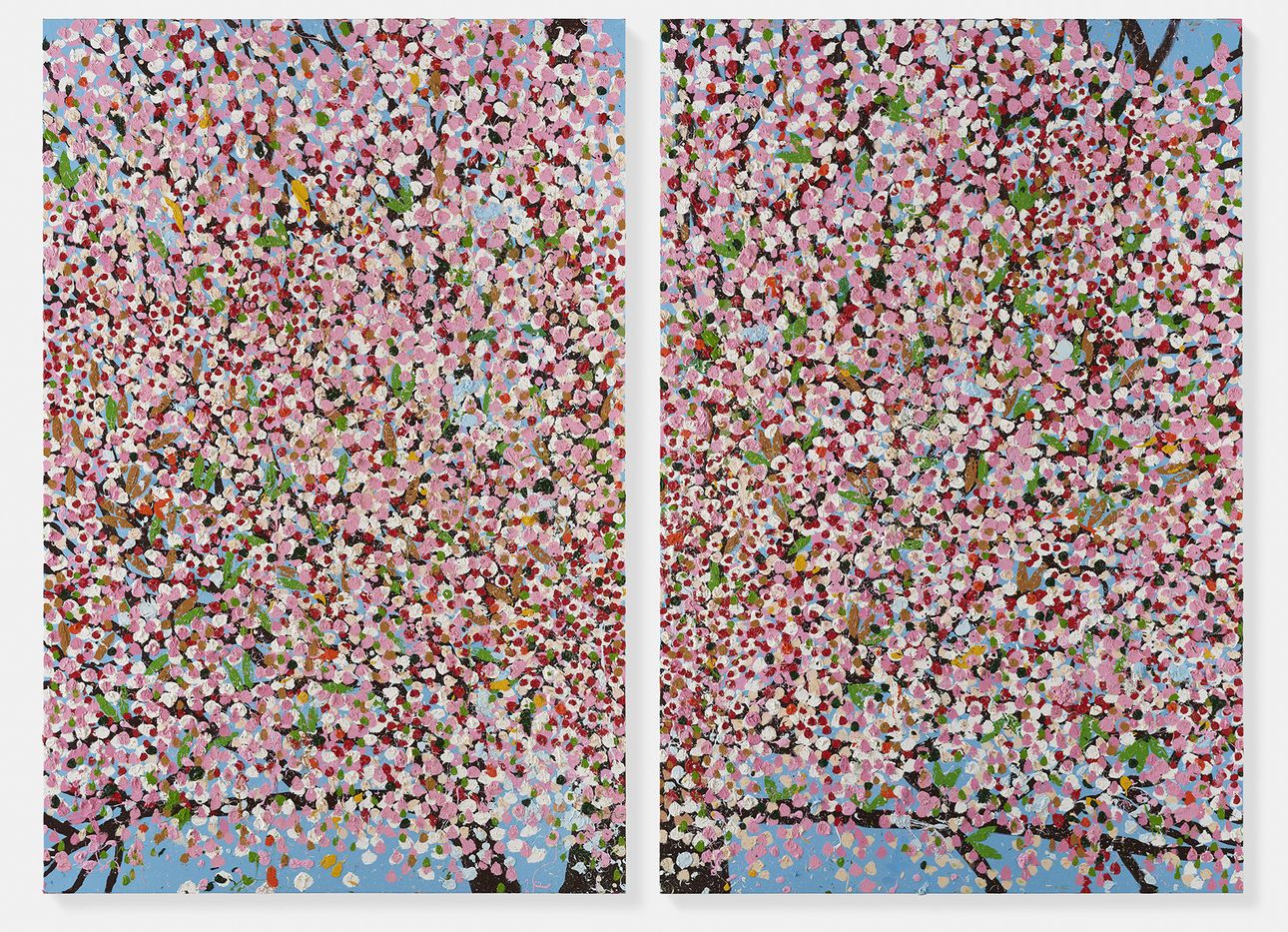
Damien Hirst Presents an Evocative Forest of Cherry Blossoms at Paris’s Fondation Cartier
As Paris emerges from lockdown and its streets come alive, the Fondation Cartier pour l’Art Contemporain, an art center located in the capital’s 14th Arrondissement and operated by a philanthropic arm of the famed French jeweler, is simultaneously in bloom. This week, it opened “Cherry Blossoms” (on view through January 2, 2022), an exhibition of expressively impastoed, large-scale oil paintings by British artist Damien Hirst that portray the flowering tree. The show, which marks Hirst’s first solo presentation in France, builds on the institution’s history of celebrating the natural world within its exhibition spaces—including the perennial plant–focused group show, “Trees” (2019–2020), and a 2019 survey of Japanese architect Junya Ishigami’s biomorphic, landscape-centric designs—as well as Hirst’s knack for making visceral, attention-grabbing creations, such as his notorious menagerie, preserved in tanks of formaldehyde. His massive canvases maintain the same riveting quality, depicting flowers through gestural brushstrokes and garish, dense, immersive masses of color. “I always just try to keep reinventing myself,” Hirst recently told the BBC. “My mum used to say, ‘There’s enough horror in the world. Why can’t you just paint flowers?’ So maybe she got to me.”
Taking in the paintings, installed along the perimeter of a gallery, it might seem as if the vegetation on them has been growing for a while. In a way, it has: Hirst spent three years on the 107-canvas series, making many pieces in the throes of the pandemic, and finished it last November. (He and Fondation Cartier’s general director, Hervé Chandès, selected 30 works for the show.) Hirst developed multiple paintings at once, making time for himself to look at and live with them, and adding further embellishments as needed. The slow, meditative approach provided a means for him to ensure each piece was fully completed to his liking, and helped him cope through the ongoing global health crisis. “It became a really solitary thing, making art,” Hirst says of the experience. “And then trying to find some positivity in all the negativity everyone was feeling. In the beginning I was really anxious. But it’s funny that in that anxiety, I made these paintings that are really positive.”